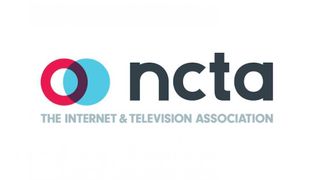NCTA: Intelsat Earth Station Cost Estimates Are Off Base
Cable operators are not happy with some of the satellite operators' proposed cost estimates for moving incumbent earth station users out of the lower portion of the C-Band, but the FCC has followed NCTA's lead in this week seeking further comment on those costs and taking into account cable ops' particular earth station-moving expenses.

FCC Proposes Added Bucks for MVPDs in C-Band Move
In a letter to the FCC June 3 in response to filings by satellite operators on the move and its costs, NCTA-The Internet & Television Association, said Intelsat's suggestions for capping per-site payments for earth station operator is arbitrary.
NCTA said a lump sum should be paid for each antenna--and that the satellite operator's estimated average costs for various classes of earth station sites appear "very low" and exclude "relevant categories."
The FCC sought comment on cost estimates for moving satellite operations, including cable and broadcast earth stations for network programming, to the upper 200 MHz of the band and, on Thursday (June 4), asked for more input on prices and methodologies for lump sum payments, including proposing a new class of MVPD earth stations that factors in extra costs and saying it would seek further comment on its cost catalog. NCTA had sought both of those in its letter.
Related: FCC's C-Band Auction still a 'Go' for December
NCTA had asked the FCC not to issue a final catalog before providing another round of comment, which it is now doing.
Multichannel Newsletter
The smarter way to stay on top of the multichannel video marketplace. Sign up below.
NCTA also tells the FCC that transition costs need to include not only new equipment and installation but costs of forms, coordination, zoning, project management and engineering fees, legal fees, consulting fees, and more.
It said ACA Connects and Cox had both come up with methodologies for lump sum payments that are better than Intelsat's at representing "the level of effort and likely costs of an average earth station operator’s transition."
Related: Pai Defends C-Band Incentive Payments to Hill
NCTA said Intelsat efforts to "cut and paste" lump sum payment text into a revised cost catalog should be rejected.
Finally, NCTA is asking the FCC to establish a way for content companies to use all of the C-Band, including the 280 MHz being auctioned to wireless carriers, on a secondary basis for live sports productions--the band is used to get video from sports venues back to the studio. NCTA argues it would be too tough to try to shoehorn those into the 200 MHz or to have to seek special temporary authorities--there are tens of thousands of live sports produced each year, or each non-pandemic year anyway--for all those portable earth stations.
Contributing editor John Eggerton has been an editor and/or writer on media regulation, legislation and policy for over four decades, including covering the FCC, FTC, Congress, the major media trade associations, and the federal courts. In addition to Multichannel News and Broadcasting + Cable, his work has appeared in Radio World, TV Technology, TV Fax, This Week in Consumer Electronics, Variety and the Encyclopedia Britannica.

